

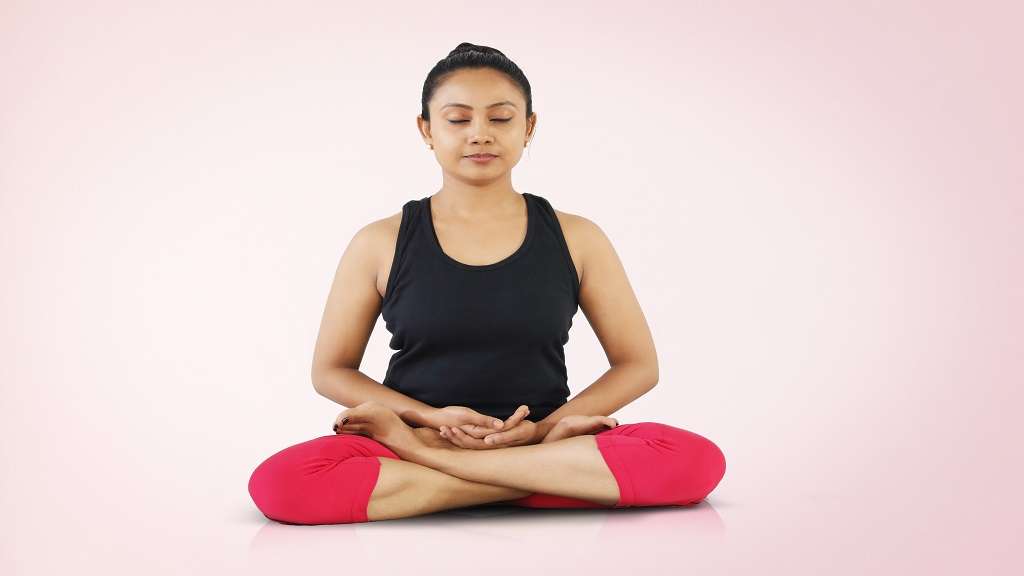
Sitting postures are those asanas that begin with the individual sitting down. These asanas include Padmasana, Mudrasana, Ardha Matsyendrasana, Vajrasana, Supta Vajrasana, Kakasana, Kukkudasana, Kurmasana, Akarna Dhanurasana, Paschimottanasana, Purvottanasana, Janu Sirshasana and Eka Pada Sirasana.
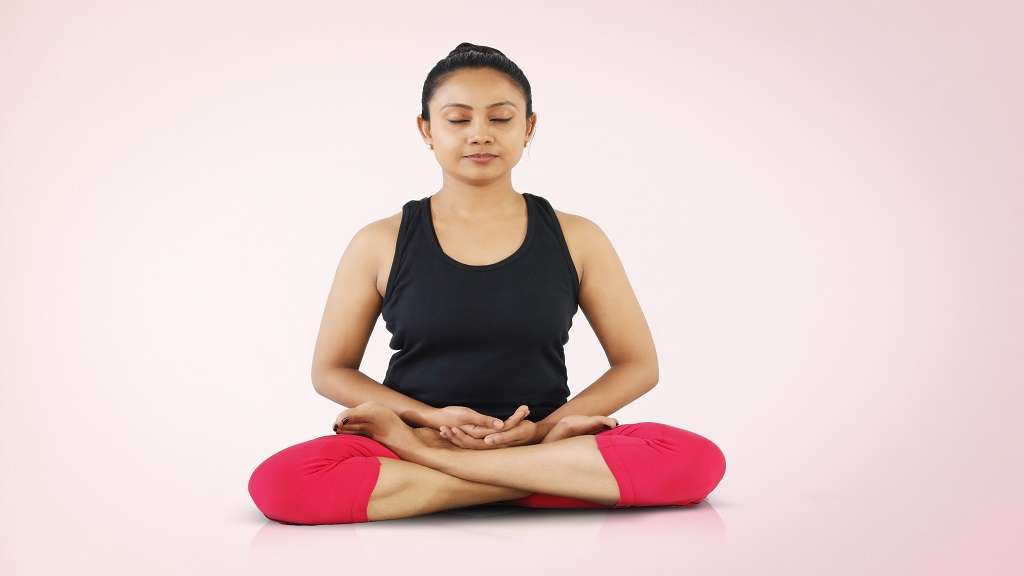
Padmasana is described as the basic posture in Yoga. In Kundalini Yoga, this posture is very important during the process of the awakening of Kundalini. How to do Padmasana? Sit on the floor. Stretch your legs out straight in front of you. Bend your right leg at the knee. Place your right foot on your left thigh with the help of your hands. Now, fold the left leg too at the knee. Once again, hold your left foot with your hands and bring it to rest on your right thigh. At this point, both your feet should be close to the navel. Ensure that the soles of your feet are turned upward. Stretch your arms out. Let your palms rest against your knees. Sit erect while maintaining the posture.
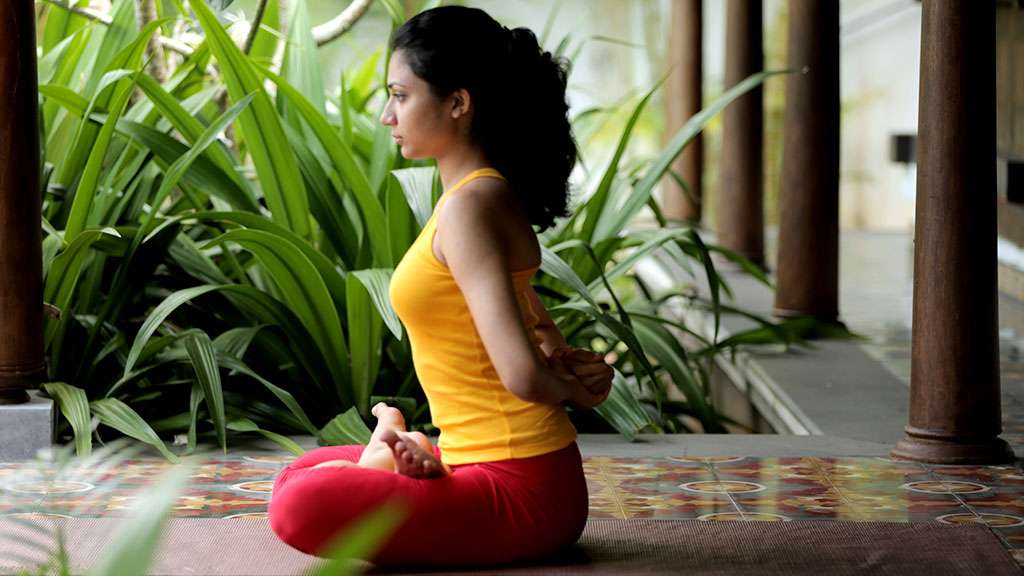
Yoga Mudrasana increases the health and flexibility of your backbone. The muscles in the abdomen will also get strengthened. How to do Yoga Mudrasana? Sit in Padmasana - that is, with your legs crossed and soles facing upward close to the navel. Inhale deeply. As you exhale, stretch your left arm backward and around your right hip. Grasp the big toe of your left foot with this hand. Now, repeat by swinging your right arm backward and stretching to grasp the big toe of your right foot with it. Inhale deeply. Exhale. Bend your trunk forward till your forehead rests against the floor.
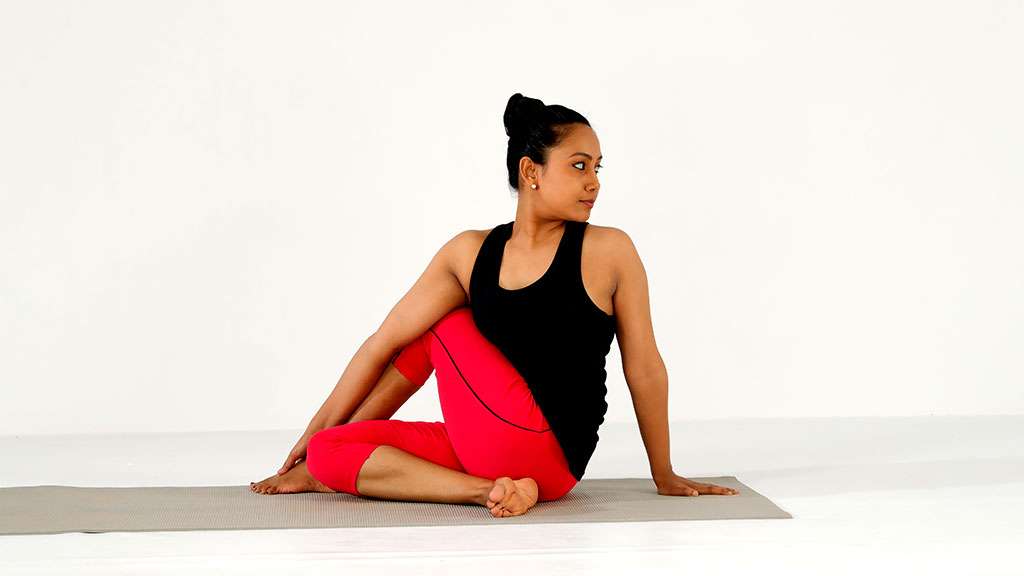
Ardha Matsyendrasana or the Spinal Twist increases the elasticity of the spine due to the twist. This asana improves the health and performance of spleen, kidney, and bowels are stimulated. This asana must be done when you are in an empty stomach condition. Make sure you have your meals at least four hours before the practice. How to do Ardha Matsyendrasana? Sit down on the floor. Stretch your legs out in front of you. Bend your right leg at the knee. Bring your right foot close to your anus, against the inside of your left thigh. Bend your left leg by raising your knee. Place your left foot flat on the floor to the right of your right knee. Stretch your right hand backward and place your palm flat on the floor behind your back. Raise your left arm over your head. Stretch it around your right knee and grasp your right ankle. Maintain the posture for 30 seconds while breathing evenly. Repeat the posture on the other side.
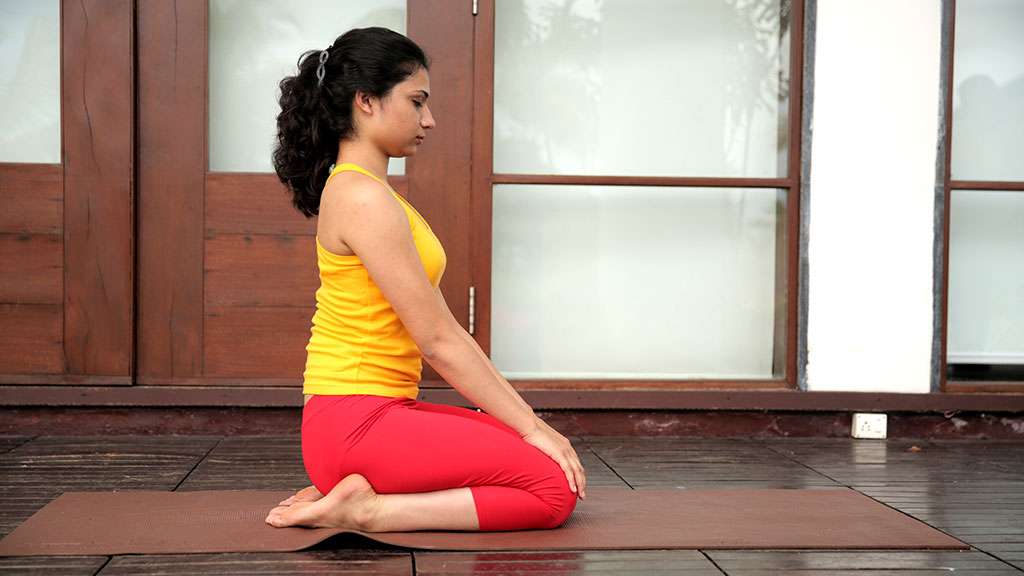
Regular practise of Vajrasna or the diamond posture will be greatly beneficial for the organs in the lower abdomen region. This asana helps to improve the power of digestion is enhanced. It is suggested that, for diabetic patients to sit 10 - 15 minutes in Vajrasana after every meal will help to improve their health. The posture is said to have the power to stimulate the pancreas. How to do Vajrasana? Kneel down. Bring your knees to close together. Ensure that your feet stay a little apart. Sit back between your calves. Pull your feet as close to your buttocks as you can. Ensure that your back is straight. Stretch your arms out forward and bring your palms to cover your knees. At the outset, maintain the posture for 2 minutes. Gradually increase the duration as you continue to practise the posture.
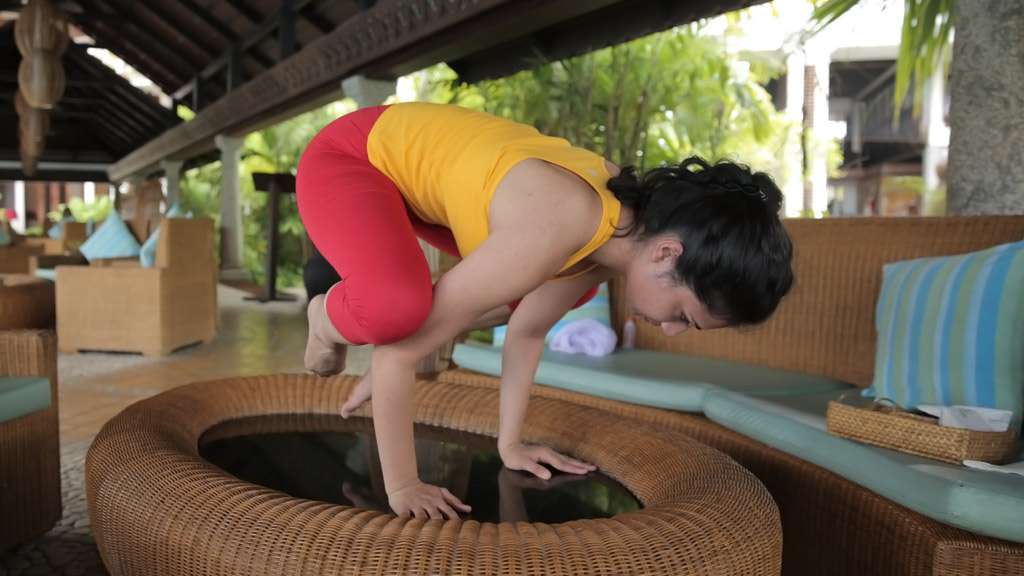
Kakasana strengthens the arms, wrists, and shoulders. The balancing pose enhances the power of concentration. How to do Kakasana? Squat on the floor. Keep both your feet and your knees apart. Stretch your arm to place your palms flat against the floor in front. Keep your fingers spread. Bend your arms slightly at the elbows. Raise your hips so that your body tilts forward, bringing your head down halfway. Let your knees be supported by your upper arms. Focus on a point away from your body, in front. Inhale deeply. While holding your breath, shift more of your body’s weight to your arms. Raise your feet one by one till you are supported entirely by your arms. Breathe evenly while balancing in the posture for as long as you can
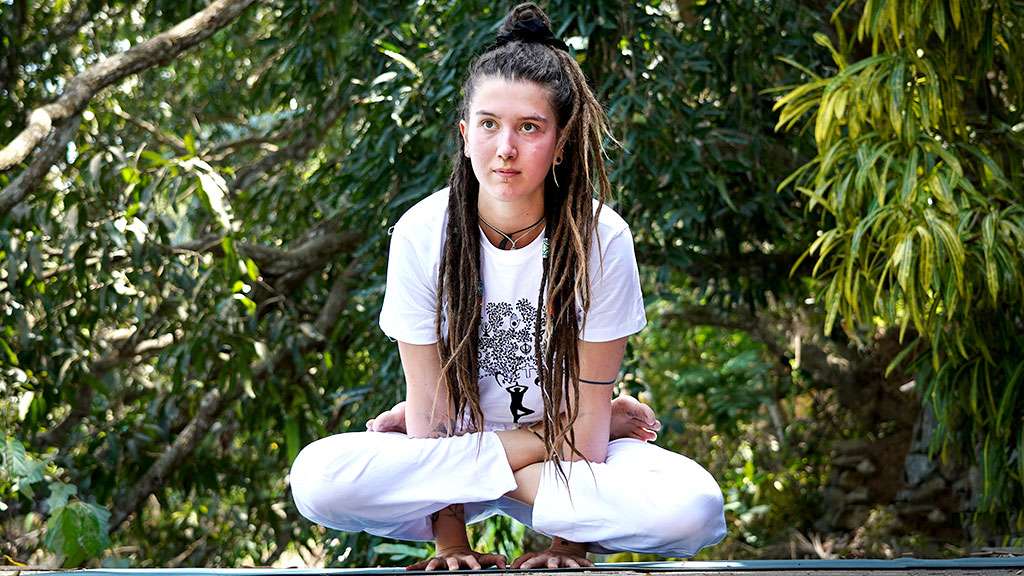
Kukkudasana strengthens the wrists and the abdominal muscles. How to do Kukkudasana? Sit in the Padmasana posture - that is, with your legs crossed and soles facing upward close to the navel. Inhale deeply. Place your hands between your thighs and your calves and place your hands downward. Push through till your palms are resting on the floor. Keep your palms beside one another, thumbs touching each other. Exhale. Lift your body off the ground slowly. Balance the weight of your body on your palms. Ensure that you are breathing evenly to better maintain balance. Remain in the posture for as long as you can.
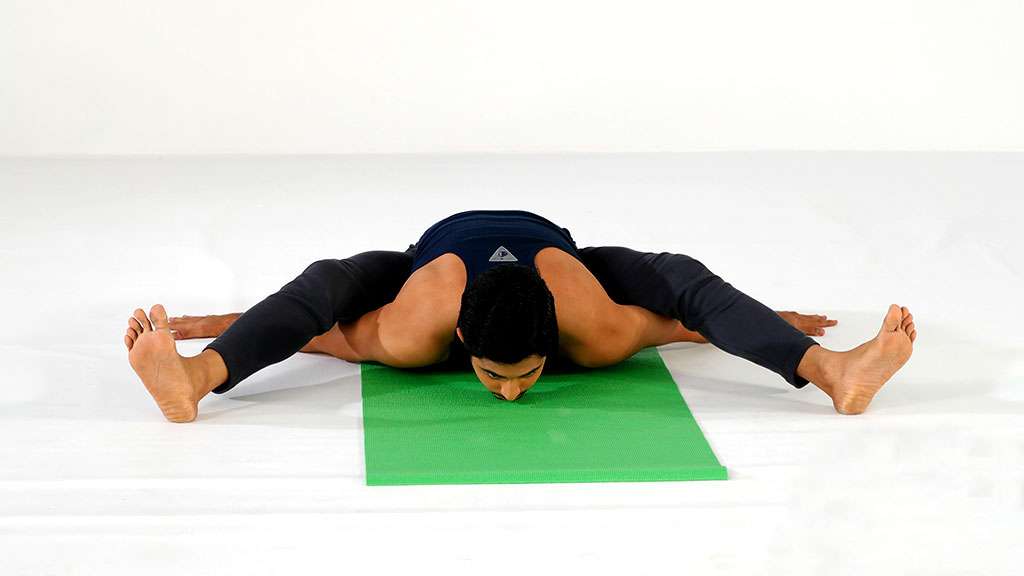
Kurmasana or Tortoise Pose does not only make your body flexible but it also supports your health rejuvenates the nervous system due to the spinal stretch. How to do Kurmasana? Sit on the floor. Stretch your legs forward and then place them as wide apart as you can. Inhale. Stretch your arms upward, over your head. Raise your knees slightly, bending them. Lower your stretched arms to either side and ensure that your palms face downward. Turn your wrist to have your fingers pointing backward. Now, slide your arms under your raised knees. Your torso must be parallel to the ground at this point. Allow your head to touch the floor. Gently stretch your legs to straighten your knees.
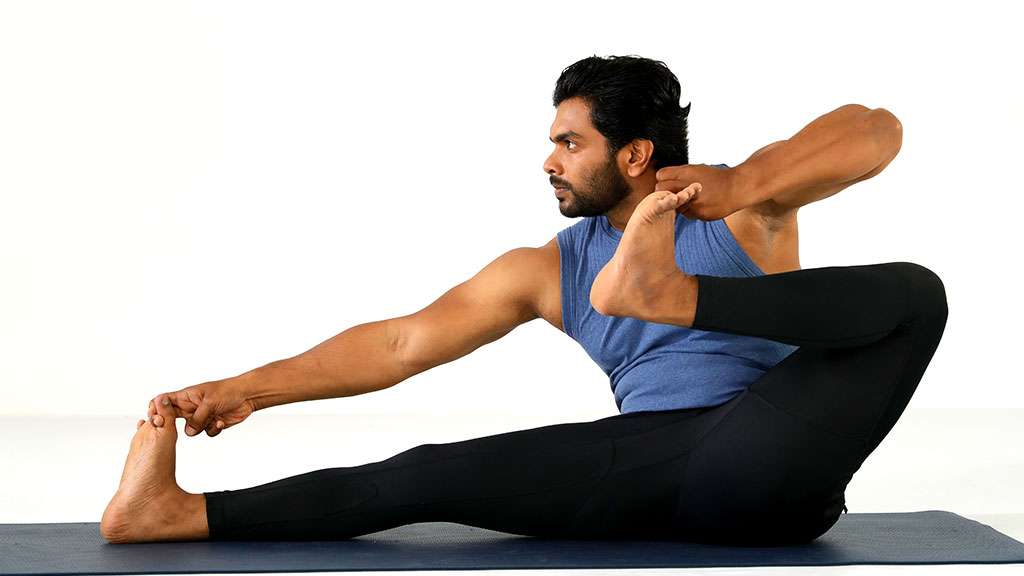
Akarna Dhanurasana, yoga posture or yoga asana improves flexibility of the leg muscles. while doing this asana on a regular basis also improves the health of abdominal muscles. How to do Akarna Dhanurasana? Sit on the floor. Stretch your legs out in front of you. Ensure that your feet are close together. Bend forward and stretch your arms to hold your toes. Keep your torso as erect as you can. Inhale. Lift your left leg. Bring your left foot up to your left ear. Keep your hold on the other leg. Maintain the posture. Breathe evenly. Repeat the movement on the other side.
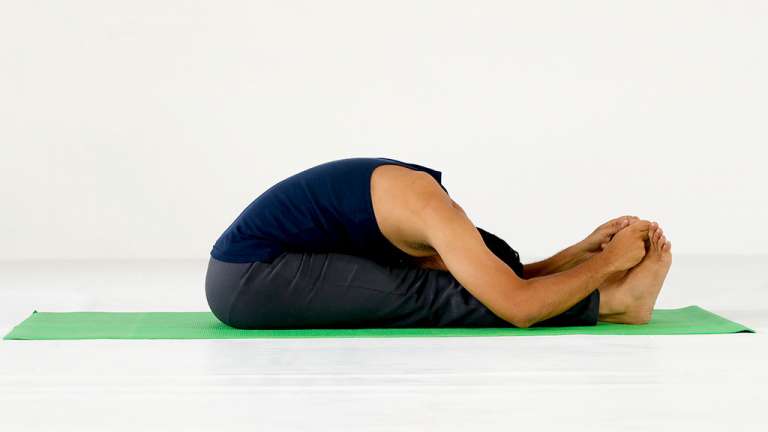
Paschimottanasana or the Forward Bend in sitting posture benefits the health of the abdominal organs. It also stimulates the digestive system and relieves constipation. This asana is an ideal exercise for the obese. How to do Paschimottanasana? Sit erect. Stretch your legs out in front of you. Inhale. Stretch your arms up over your head. Exhale. Bend your torso forward from the waist. Lower your outstretched arms simultaneously, and grasp your toes. Bend further to close the gap between your chest and your thighs. Try to let your forehead rest on your legs. Maintain the posture for about 30 seconds to one minute while breathing evenly. Inhale. Lift your torso and raise your arms over your head. Relax your arms and bring them down.
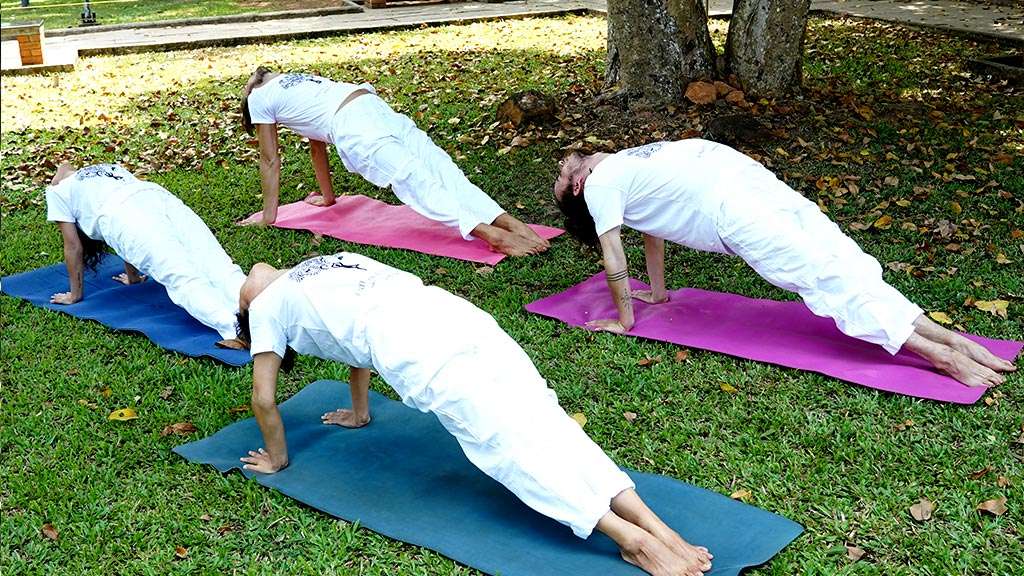
This asana strengthens the triceps, wrists, back, and legs. It also stretches the muscles of your shoulders, chest, and front ankles. How to do Purvottanasana? Sit erect. Stretch your legs out in front of you. Stretch your arms backward to place your palms behind you. Point your fingers backwards. Arch and slowly drop your head backwards. Allow your arms to support your upper body. Inhale. Raise your hips off the floor till your body forms a straight plank. Make sure that your feet are placed flat against the floor and have a firm grip. Breathe evenly. Maintain the posture for 10 seconds. Increase this time as you practise. Gradually lower your hips to the floor and relax.
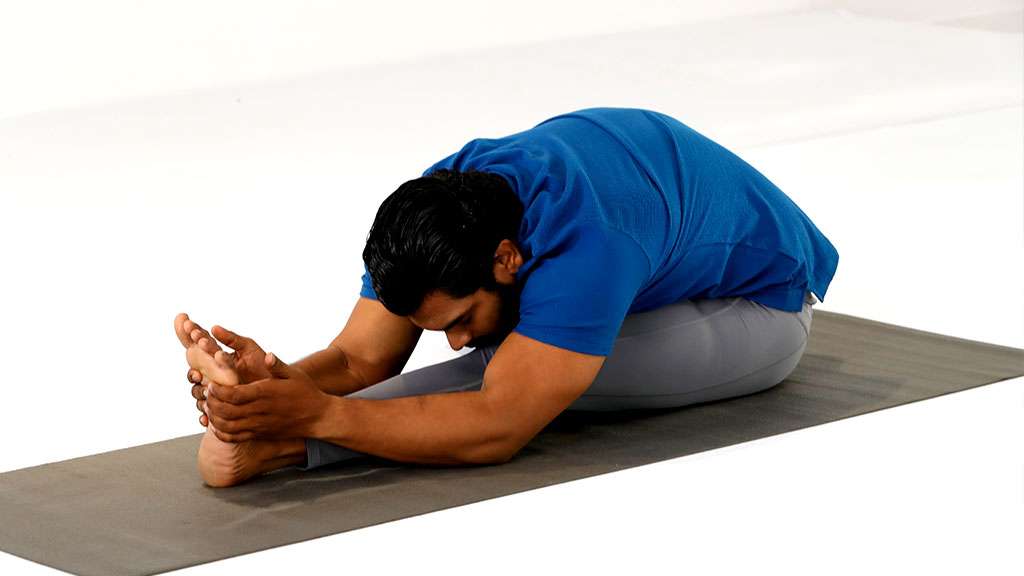
Regular practice of Janu Sirshasna calms your brain and will be relieved from stress. This asana reduces anxiety levels in the body and also the mind. How to do Janu Sirshasana? Sit erect. Stretch your legs out in front of you. Bend your left leg at the knee in such a manner that the calf is placed against the floor. Your left foot should be turned down along the floor so that the heel can press into the inner side of your right thigh. Bend forward and reach for your outstretched right foot with both hands. Keep your chin up and your head high. Exhale. Bend your torso forward at the waist so that your forehead rests on your right knee. Maintain the posture for a minute while breathing deeply. Relax the grasp of your right toes. Return to an erect position while remaining seated. Repeat with the other leg.
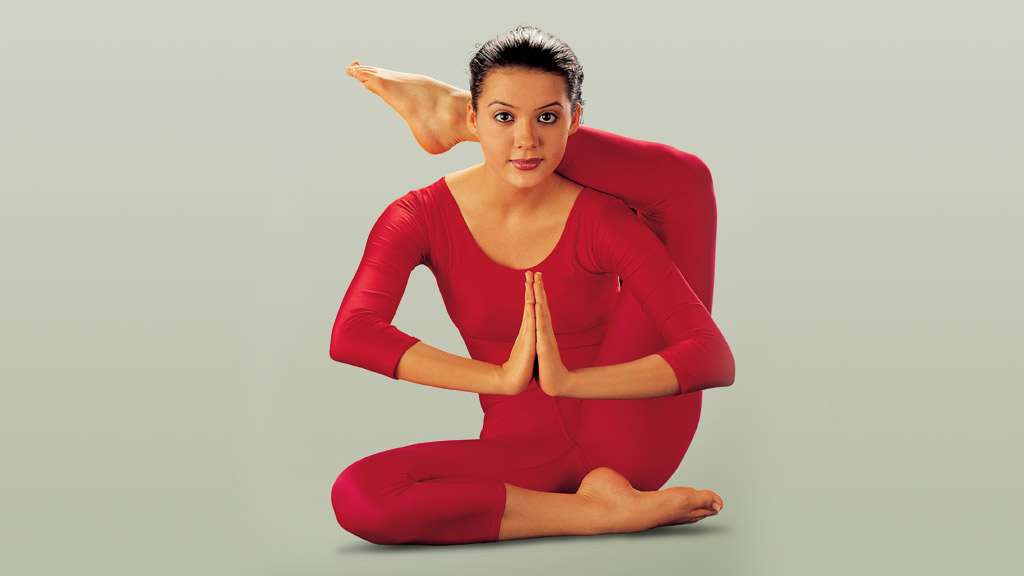
While doing Eka Pada Sirshasana, the parts of the body benefited are the lumbar and thoracic regions. How to do Eka Pada Sirshasana? Sit cross-legged on the floor. Grasp your right foot with both hands and draw the sole up towards your chest. Raise the foot further to the level of your nose and then to your forehead. Tilt your head forward so you can bring the right leg over your right shoulder. Stretch your leg a little further so that the toes are aligned with the back of your head. Bring your arms together as in prayer, at the level of your chest. Maintain the position for a few seconds. Repeat the posture with the other leg.
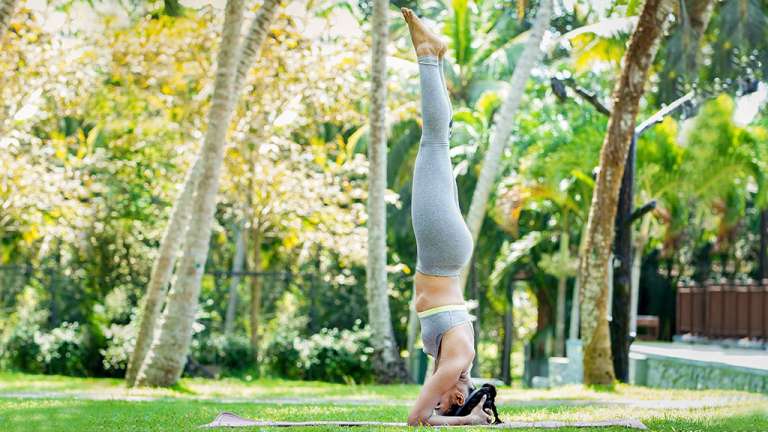
Sirshasana strengthens the respiratory system and improves blood circulation. It enhances the powers of memory and concentration and good for your health. How to do Sirshasana? Sit back on your heels. Bend forward till your forearms can rest flat on the floor. Keep your elbows apart. Interlock your fingers so that your hands form a cup. Place the crown of your head on the floor. Let your palms support the back of your head. Straighten your knees by raising your hip into the air. Ensure that your head and arms are still positioned firmly. Take small steps and move your feet towards your face. When your hips are over your head, your body should form an inverted ‘V’. Relax your knees and lift your legs off the floor. Again, ensure that your head and forearms are placed firmly on the floor. Now, lift your legs further till your feet point upwards. Stand upside down this way for about 2 minutes. Relax your knees and slide down gently to the floor.